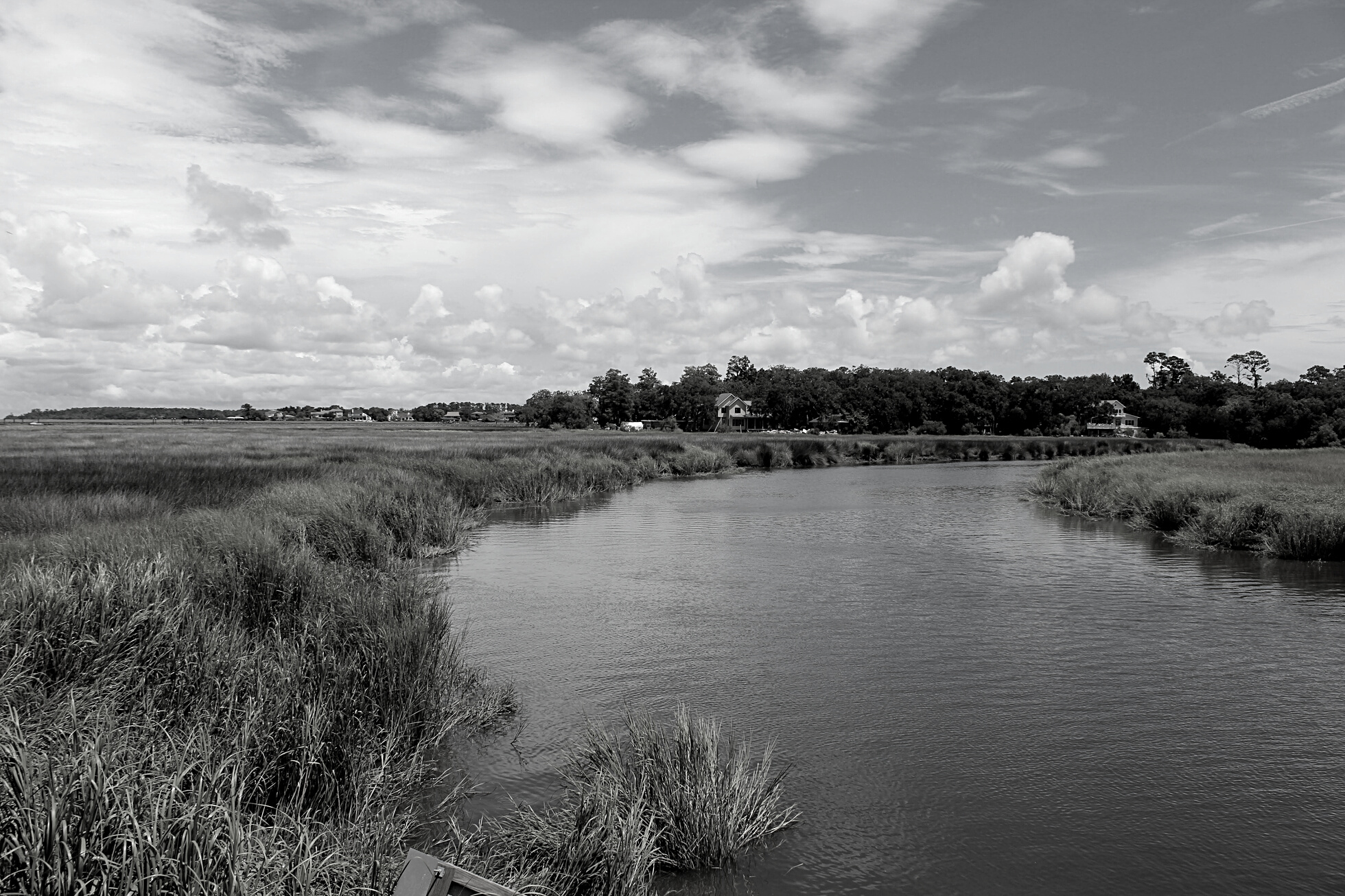
Da Wada Brought Us
& Kept Us
A collection of Gullah geechee Art
Curated by the Gullah geechee cultural heritage corridor
September 2022 - january 2023
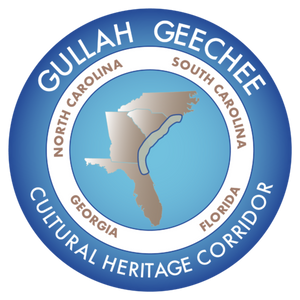
Igbo Landing
Dunbar Creek, St. Simon’s Island
Collection Description
The collection features over 20 works of art from emerging and notable artists, whose compositions derive from a broad range of styles and stories of aqua culture and rice culture, conveying the collector’s love of her Gullah Geechee heritage. Featured in the collection are works from renowned artists such as James Denmark, Cassandra Gillens, Jonathan Green, Charles DeSaussure, Synthia Saint James, with pieces from regional and local creatives such as Amiri Farris. The exhibition also includes several sweetgrass baskets by local basket sewers as well as literature created by the Lowcountry Rice Culture Project. This collection has taken more than a decade to acquire. Victoria A. Smalls is a public historian and educator, arts advocate and cultural preservationist, who believes in the value of building sustainable communities through the arts. Within her roles as the Executive Director with the Gullah Geechee Cultural Heritage Corridor and a Maven with the Art of Community-Rural SC, Smalls has gained an appreciation and passion for learning and sharing all she can about the history, art and culture of her people.
Victoria A. Smalls
Artist & Collector

Gullah Geechee Cultural Heritage Corridor
The Gullah Geechee Cultural Heritage Corridor is a National Heritage Area managed by the Gullah Geechee Cultural Heritage Corridor Commission. The National Heritage Area program is managed by the U.S. National Park Service. National Heritage Areas are designated by Congress as places where natural, cultural, and historic resources combine to form a cohesive, nationally important landscape. The purpose of the Gullah Geechee Cultural Heritage Corridor NHA is to preserve, share and interpret the history, traditional cultural practices, heritage sites, and natural resources associated with Gullah Geechee people of coastal North Carolina, South Carolina, Georgia and Florida.
We convene public meetings four times a year to hear from the public about work that is being done to preserve, share and interpret the history, traditional cultural practices, heritage sites, and natural resources associated with Gullah Geechee people. We issue a monthly newsletter that serves as a platform for sharing information from these meetings and about the work that is being done across the Corridor to further these goals.
We regularly mount public programs on Gullah Geechee history and culture at schools, libraries, heritage festivals and other community venues. These programs are free of charge and open to the public. We also partner with schools, library systems, heritage sites, museums and community groups to develop and present programs.
Avery Research Center
To understand the Avery Research Center, it is important to consider its rich history. Founded in 1865 as the Avery Normal Institute, this community hub provided education and advocacy for the growing Charleston African American community and trained blacks for professional careers and leadership roles. Although the Institute closed its doors in 1954, it graduates preserved the legacy of their alma mater by establishing the Avery Institute of Afro-American History and Culture.
The modern rebirth of Avery began in 1985 with the establishment of the Avery Research Center for African American History and Culture at the College of Charleston. The newly christened center came to fruition through a memorandum of understanding between the former Avery Institute and the College, with many of the charter members graduates of the original Avery Normal Institute.
For the last thirty years, the Avery Research Center has collected art and archival materials that document the history, traditions, and legacies of African Americans and their influence on American society and culture, as well as their place within the American narrative.
The Avery Sweetgrass Basket Collection holds significant modern examples of a centuries-old craft. Following African traditions, baskets of coiled grasses were originally produced by slaves on Lowcountry plantations for agricultural use. Over time, sweetgrass baskets have become artistic expressions that retain the African aesthetic — a symbol of African American culture and a signature of the Lowcountry region. Alongside the baskets, the Avery Research Center has gathered visual and oral histories of the modern basketmakers and their families.


Lowcountry Rice Culture Project
International artist, Jonathan Green. The mission is to serve as a clearinghouse and partnership builder for activities that explore, reveal and reclaim the shared cultural inheritance of the southeastern Lowcountry rice legacy. The following broad definitions are used as mechanisms for their work:
Art
- The discovery and development of the principles found within nature interpreted into beautiful forms suitable for human use. The purpose is to expose to the consciousness the deepest interests of humanity.
History
- The study of past events and change in human society particularly relating to political, social, economic, scientific, technological, medical, cultural, intellectual, religious and military developments.
Culture
- The customary beliefs, social forms, and material traits of a racial, religious, or social group; also, the characteristic features of everyday existence (such as diversions or a way of life) shared by people in a place or time.
Education
- The act of teaching knowledge to others and the act of receiving knowledge from someone else.
The Lowcountry Rice Culture Project partners with organizations across the Lowcountry, the Nation and the World to preserve the history, art and culture of the West Africans brutally removed from their home countries and continent to labor without compensation in the building of America. They highlight the value of the contributions of these
Events & Programs
9/29
Opening Reception
Collectors talk and Reception hosted by Victoria Smalls & Daron L Calhoun
11/19
Adinkra Stamp Workshop
Artist Hank Herring will lead a workshop discussing Adinkra symbols to create a community mural
1/14
Sweetgrass Workshop
Learn the art of sweetgrass sewing from a local artist
1/26
Artist Talk
Several Artist from the collection will gather to discuss their work and their artistic journey
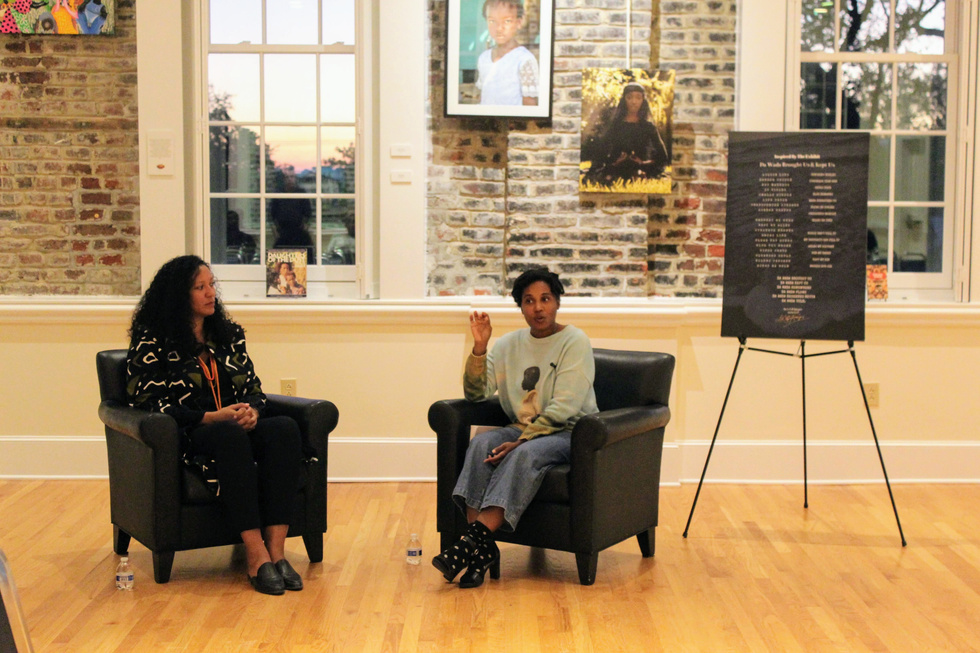
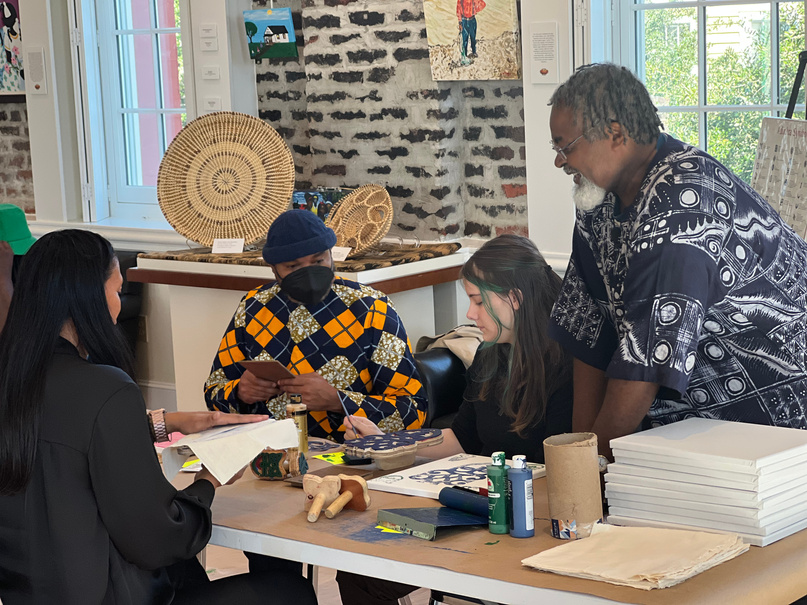
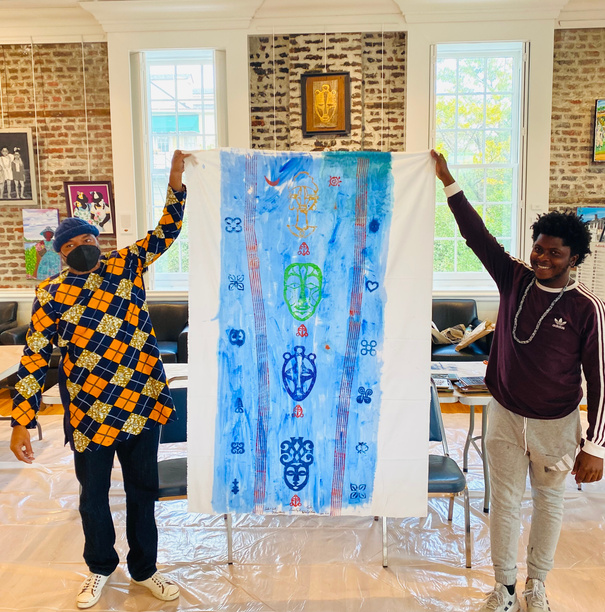
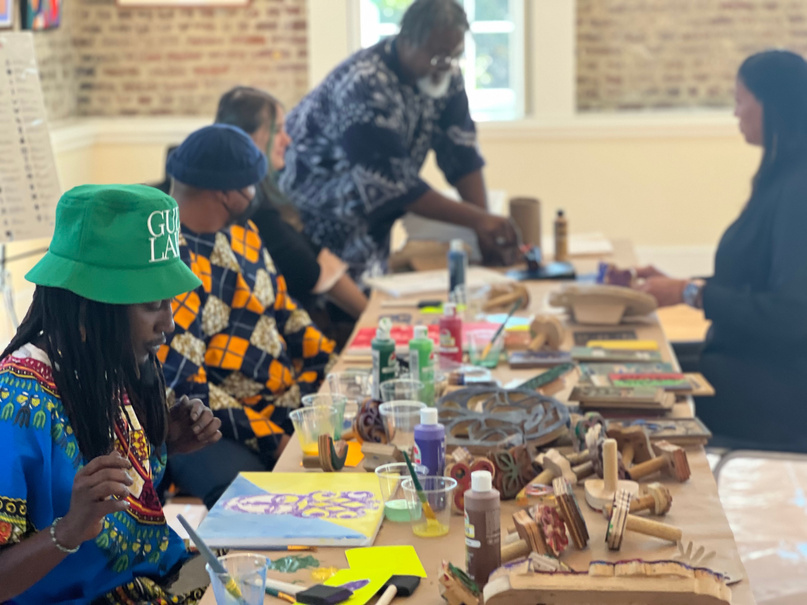

Da Wada Brought Us & Kept Us
Artist Biographies
Synthia Saint James born February 11, 1949, is an American visual artist, author, keynote speaker, and educator. She is best known for designing the original cover art of the hardcover edition of Terry McMillan's book Waiting to Exhale. She also designed the first Kwanzaa stamp for the United States Postal Service, which was first issued in 1997. Then she designed the 2016 Kwanzaa Forever Stamp.
Jonathan Green is an internationally acclaimed and awarded professional artist who graduated from The School of the Art Institute of Chicago in 1982. His forty-year track record of creating art and extensive inclusions in museum collections and exhibitions throughout many countries has led to his being considered by numerous art critics and reviewers as one of our nation’s outstanding American artists and highly recognized visual master for capturing the positive aspects of American and African American Southern cultures, history, and traditions.
Hank D. Herring was born in Rose Hill, North Carolina and currently resides in Beaufort, SC where he is the proud owner of the Green Herring Art and Framing Studio. Hank learned about art at an early age from watching and being instructed by artistic family members who inspired Hank to pursue his artistic development by taking art courses in school.
Mary Inabinett-Mack was born the third child of eight on a tobacco farm in Colleton County, South Carolina. Mary is a local icon in the world of art collecting. Over the last couple of years, Mary has transformed images of the St. Helena Sound into a series of paintings called "Women and Water." Her career in the health-care industry has spanned 50 years as a registered nurse in New York and later the Deputy Executive Director of the Beaufort-Jasper-Hampton Comprehensive Health Services.
Beloved Diane Britton Dunham’s (1955 - 2022) work has been recognized internationally as a genuine illustration of the history and traditions of African American southern culture for over two decades. Her paintings are well known because of their brilliant coloring, intricate human and landscape forms, and themes that represent life in South Carolina’s Low country region and the bayous of Louisiana. A self-taught mixed media artist and former instructor, Dunham has received honors and awards for her work. Diane’s artwork has been featured in many local and national publications, and can be found in private collections around the world.
Richard D. White is a native of Beaufort, South Carolina and has always had a love for the arts. As a child he was influenced by his mother, a cross-stitch and calligraphy artist. Richard grew up in one of the Gullah communities of the Sea Islands of South Carolina where arts and crafts are a way of life. Sweetgrass basket weavers, shrimp net makers, wood carvers, and musicians are just people in the neighborhood.
James Denmark was born in Winter Haven, Florida, on March 23, 1936 into a family of artists. He was exposed to color and form at an early age by his grandmother – a wire sculptor and quilt artist, by his grandfather – a bricklayer noted for his unique custom design molds – and his mother – gifted with an intuitive feeling for design and a fastidiousness for detail which she expressed in all aspects of her life. This rich beginning is the root of Denmark’s creative expression.
Patricia Elaine Sabree is the product of Lake City, a small country town carved from the dark earth, located in the low country of South Carolina. To escape the dreaded fields of labor,Sabree obtained a Bachelor's of Arts Degree from South Carolina State University, and a Master's of Education from Southern Wesleyan, Central, South Carolina. When you observe her works, you will find them reminiscence of the Deep South. Her style can be best classified as Expressionism because of the bold brushstrokes, vibrant lash of colors, crossed-sectional patterns, sometimes featureless individuals, bright-eyed little girls and boys.
Victoria Smalls is a public historian and educator, arts advocate and cultural preservationist, who believes in the value of building sustainable communities through the arts. She is a Maven with the Art of Community-Rural SC, and the Executive Director of the Gullah Geechee Cultural Heritage Corridor.
Beloved Allen Fireall was an American Postwar & Contemporary artist who was born in 1954. Allen Fireall's work has been offered at auction multiple times. Allen Fireall was largely influenced by the 1970s. Conceptualism is often perceived as a reaction to Minimalism, and the dominant art movement of the 1970s, challenging the boundaries of art with its revolutionary features. The artist died in 2014.
Clyde Williams is a Beaufort artist and art restorer who paints in the style of impressionistic-realism. He can capture the essence of age and scenes from the past with a very rustic appearance. His humble beginnings, in oil, shows Williams' home in downtown Beaufort. At the age of seven, he started painting, literally, on the house he grew up in. His mother had five children; she never knew which of them were doing the artwork. That was his first canvas.
Cassandra Gillens is a self-taught artist. She uses the hues of paint to bring to life the traditions of the past and her love for people and culture of the American South. Her work is inspired by the stories she has heard from her grandmother; a native born of Beaufort South Carolina, as well as the area where Mrs. Gillens spent much of her childhood.
Amiri Geuka Farris is a contemporary, multidisciplinary artist who uses a wide range of work encompassing painting, drawing, video, performance, and installation. Farris received his MFA in Painting, with his BFA in Illustration and Graphic Design, from the Savannah College of Art and Design.
Michael Boulware Moore is a high-impact business leader, keynote speaker, board member, author, and photographer. He is an innovative thought leader on diversity and inclusion, African American history, social justice, and brand strategy. He earned a BA from Syracuse University and an MBA from Duke University.
Beloved Charles H. DeSaussure (1954 ~ 2012) was born in Yemassee, South Carolina, his family moved to President Street in Charleston, where he grew up. Early on Charles was interested in art, the world around him was rich in Gullah culture. The urban influence was emerging in his work with paintings of Juke Joints, musicians, street vendors, sweetgrass gathering, and sweetgrass basket sewers chatting happily in the Charleston market. In addition to work on canvas and paper, Charles was a skilled sign painter and muralist. His signs and murals are on many buildings throughout the Lowcountry and Washington DC.
Christopher “Sancho” Smalls was born in Beaufort, SC, and raised on St. Helena Island, surrounded by the rich Gullah culture and art of the coastal sea island. Due to his environment, Sancho developed an appreciation of the intimacy and instinctual beauty of visual art. Working in mediums such as painting, drawing, and mixed media, Sancho gravitated to any creative resource, not limiting himself to one vein of creation.
Lisa Rivers, artist and owner of Legacy Art Gallery, is a resident of St. Helena Island, SC and native of Brooklyn, NY. Her paintings are easily recognized by their bright bold colors, vividly portraying the stories of Gullah culture.
Sandra Renee Smith is a native Gullah descendent born in the house she grew up in on the isolated island of St. Helena, SC. She is a self-taught, outsider, folk artist who picked up a paint brush for the first time late in life, following the loss of very close family members every six months for two years.
Irene Tison is a self taught artist from the Low Country of South Carolina. Her paintings shows the hard work and the good times she had growing up on a farm. Irene creates paintings from her childhood memories and those great stories her parents told. Each time she creates a painting, she’s Inviting you into her wonderful childhood.
Alan Laird has been a professional artist and historical scholar over the past twenty plus years, creating art and researching and collecting African American History.In 2016 I was contacted by Smithsonian African American Museum, leading to my major donation to the African American Museum of some of my WW1 African American artifacts.
Min. Johnnie F. Simmons creates such humorous depictions and quirky slices of life, which draws from his St. Helena Island upbringing. A Vietnam War veteran, Simmons began creating art as a form of therapy when he was suffering from post traumatic stress disorder. He started by painting rocks in the craft room of a VA hospital where he was undergoing a six-week PTSD program.
Zayid Majid has been creating art for more than 20 years. There really are very few mediums the artist has not worked in. Influenced by the European masters, Majid's work is not only strikingly rich but also powerful in its simple depictions of the African diaspora. From rhythmic music scenes to everyday people captured in movement, Majid infuses his images with an amazing vibrancy.
Past Exhibit at Beaufort Arts Coucil | Mather School

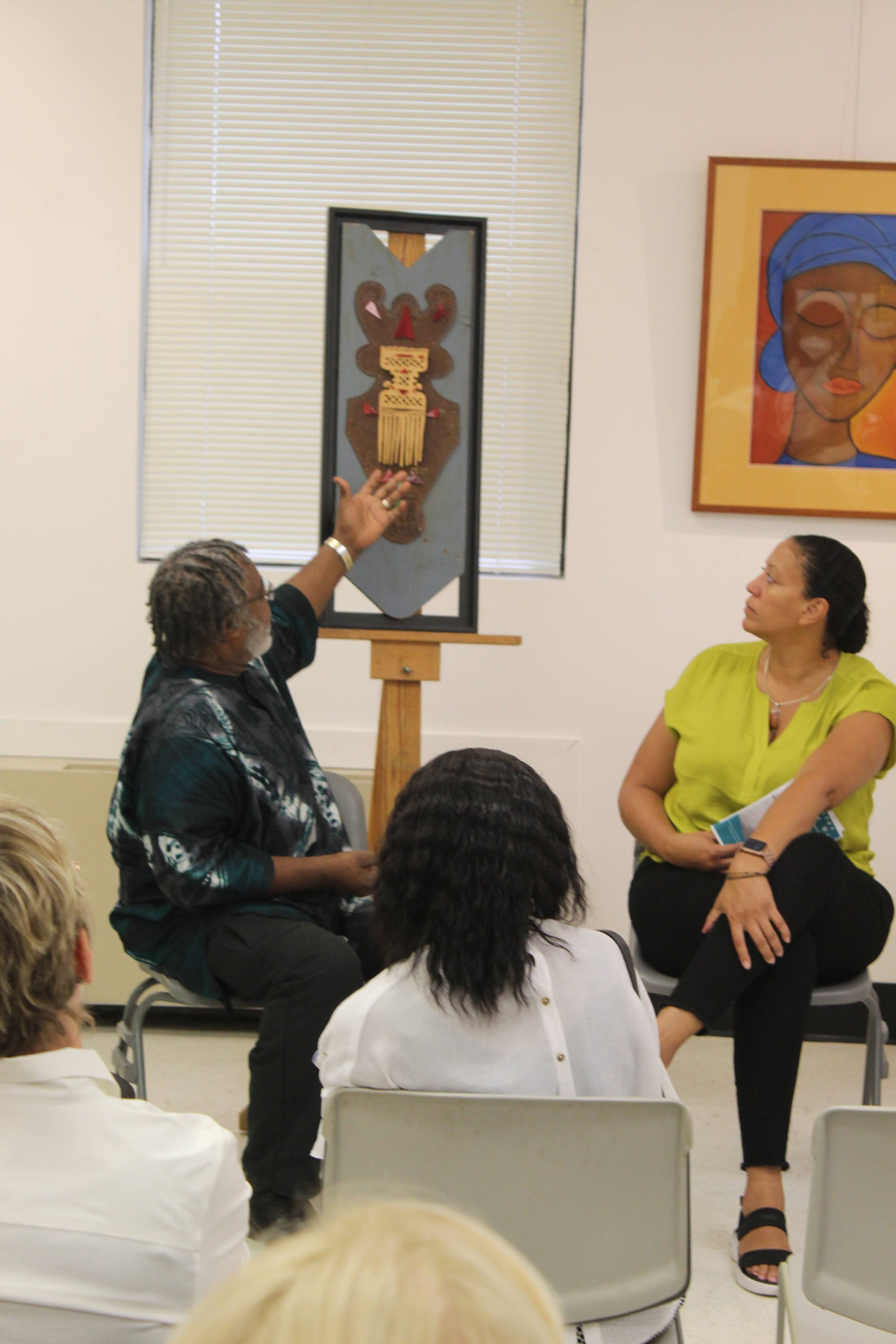
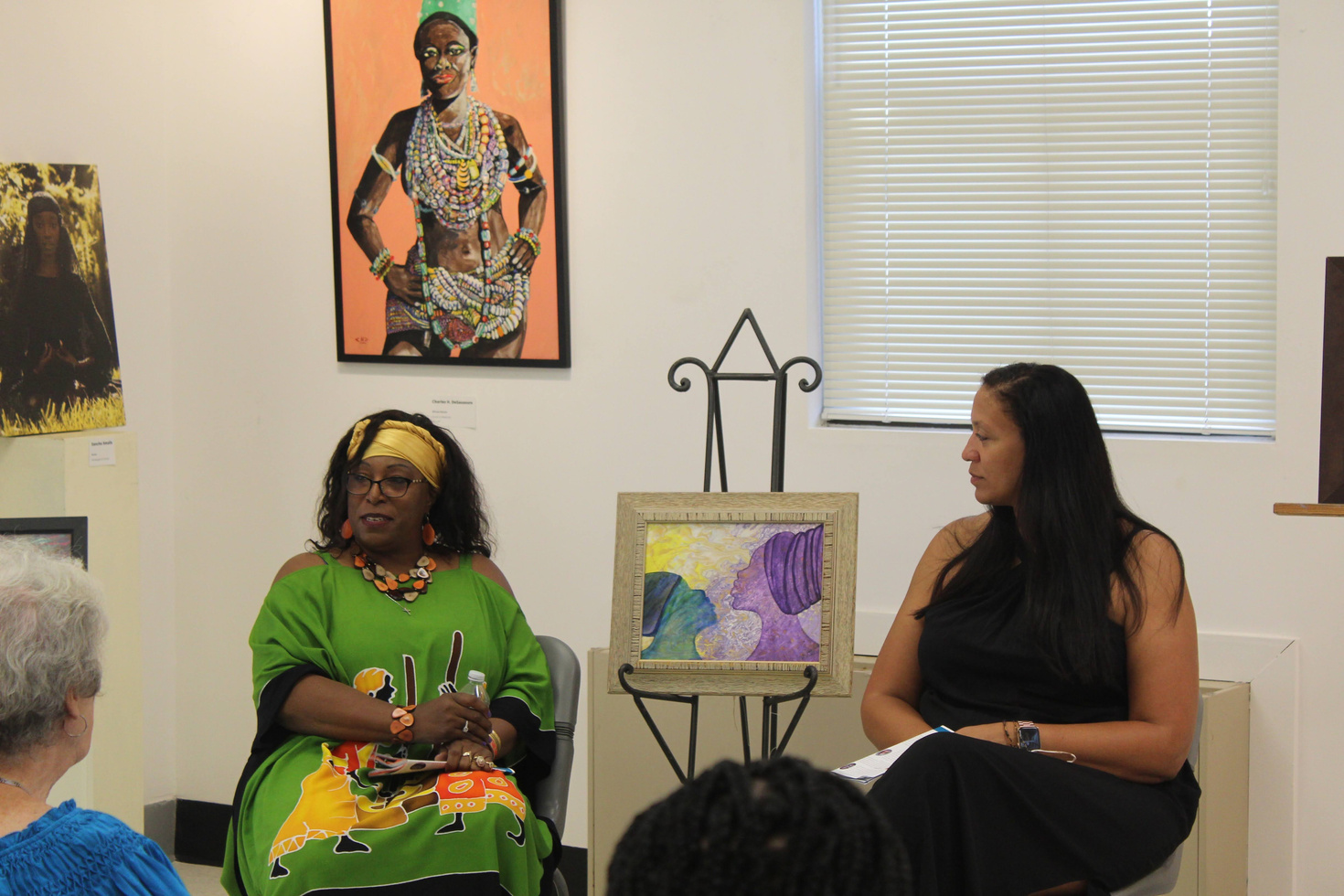
Artist Talk: Mary Mack
Artist talk: hank herring
artist talk: Sandra Renee